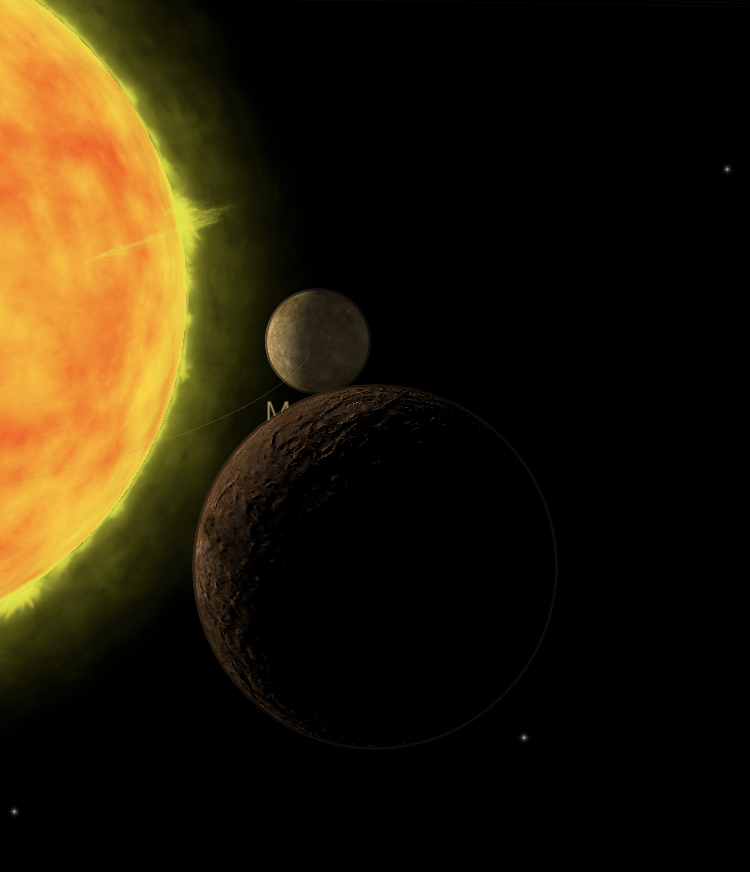2020. 7. 28. 09:25ㆍSky observation
Venus is the second planet from the Sun. It is named after the Roman goddess of love and beauty. often been described as Earth's "sister planet" because it bears a striking similarity to Earth in size, density, and composition. But its similarities end there: the surface of Venus is one of the most inhospitable places in the solar system.

Orbit and Observation
Venus orbits the Sun with a period 225 days, at an average distance of 68 million miles (108 million km) or 0.72 AU. Its nearly-circular orbit is only inclined about 3.4 degrees to the plane of the Ecliptic. Venus orbits inside the orbit of Earth; so like Mercury, Venus is only seen in the morning or evening sky. At maximum elongation, Venus is about 47 degrees from the Sun. With an apparent magnitude ranging from -3.8 to -4.4, Venus is brighter than any star. Venus is often called the "Morning Star" or "Evening Star" because of its prominence in the sky.

In a small telescope, Venus shows phases, similar to the phases of the Moon. Its appearance changes from a gibbous shape, when it is on the far side of the Sun, to a thin crescent when it is closer to Earth. The first person to observe the phases of Venus was Galileo, in 1610. From this observation, Galileo deduced that Venus must orbit the Sun - this disproving the Ptolemaic model of the solar system.

Atmosphere and Climate
Almost no surface detail is visible on Venus with even the largest telescopes. Astronomers realized early on that Venus's surface is completely covered by clouds. Early spectroscopic observations revealed the presence of carbon dioxide in the atmosphere, but little else. Since Venus's surface was not visible, its nature was a subject of intense speculation. Authors and scientists postulated warm, wet, swamps with nearly-constant rainfall; or hot, dry deserts with billowing dust clouds; or a global ocean of carbonated water.
At the surface of Venus, the atmospheric pressure is 92 times that on Earth - similar to the pressure a depth of 1000 meters below the surface of our oceans. Venus's atmosphere is also very hot, with a surface temperature of about 870°F (470°C). That is hotter than any household oven, and hot enough to melt lead. The thick atmosphere spreads heat evenly across the planet, with only a few degrees of temperature difference between the day and night sides, or from equator to pole. Venus's clouds are not composed of water droplets, like Earth's; but rather of sulfuric acid. The hot, dense, and poisonous atmosphere makes Venus completely uninhabitable to life as we know it.
'Sky observation' 카테고리의 다른 글
| 행성 목성 -Planet Jupiter (0) | 2020.07.30 |
|---|---|
| 화성의 행성 Planet of Mars (0) | 2020.07.29 |
| MEADE ETX125 OBSERVER (0) | 2020.07.26 |
| 천문학 -Astronomy (0) | 2020.07.22 |
| 슈퍼 문 -Super Moon 2020 (0) | 2020.07.16 |